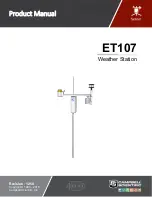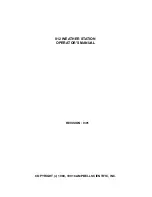
10
Installation and commissioning
Weather Station Suntracer KNX basic
• Status: 15.07.2013 • Technical changes reserved. Errors reserved.
DANGER!
There is a risk to life from the live voltage on a 230 V device!
•
The cover must be screwed on in operation.
To remove it, the sensor can be simply pulled upwards out of the mount, against the
resistance of the fastening.
2.3. Notes on mounting and commissioning
Do not open weather station if water (rain) might ingress: even some drops might
damage the electronic system.
Observe the correct connections. Incorrect connections may destroy the weather sta-
tion or connected electronic devices.
Please take care not to damage the temperature sensor (small blank at the bottom part
of the housing.) when mounting the weather station. Please also take care not to break
away or bend the cable connection between the blank and the rain sensor when con-
necting the weather station.
Remove all existing protection labels after installation.
The measured wind value and thus all other wind switching outputs may only be sup-
plied 60 seconds after the supply voltage has been connected.
After the auxiliary voltage has been applied, the device will enter an initialisation phase
lasting a few seconds. During this phase no information can be received via the bus.
Fig. 14
With the 230V model, screw the cover on to
the underpart, to prevent unauthorised or ac-
cidental opening.
Fig. 15
Push the housing from above into the fas-
tened mount. The bumps on the mount must
snap into the rails in the housing.





























